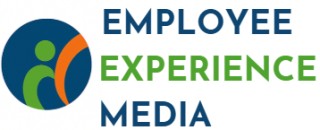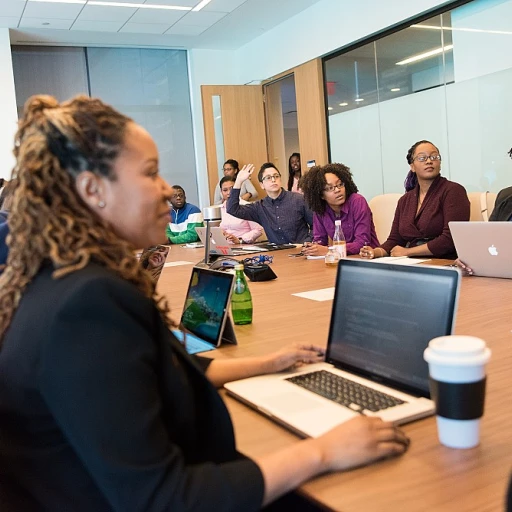
Understanding the Importance of Mid-Year Check-Ins
Emphasizing the Significance of Mid-Year Check-Ins
Mid-year check-ins stand as a pivotal component in the realm of performance management, offering a dedicated time to review employee performance and set or realign development goals. By prioritizing these reviews, organizations pave the way for enhanced employee engagement and foster a culture of continuous improvement.
Such check-ins provide an invaluable opportunity for managers and team members to engage in open dialogue, discuss year performance thus far, and address any areas for improvement. This not only helps employees stay on track with their personal and professional development objectives but also ensures that teams are aligned with the overarching goals of the organization.
Allowing room for constructive feedback, these sessions contribute significantly to elevating team morale and help in preventing misalignments or misunderstandings. They enhance communication channels between employees and managers, which in turn supports a more harmonious work environment.
Mid-year check-ins can also serve as a precursor to the year-end performance reviews. By addressing performance issues or reinforcing positive development in a timely manner, businesses can minimize surprises at the year review and ensure that goals set are consistently met. To derive maximum benefit from these meetings, managers should prepare by crafting thoughtful review questions that invite honest and productive feedback.
For actionable advice on crafting meaningful mid-year check-ins, you might find this engaging employee spotlight resource particularly insightful.
Setting the Stage for Effective Check-Ins
Creating the Right Environment for a Productive Discussion
Establishing an atmosphere conducive to honest and productive dialogue is essential for mid-year check-ins. These sessions are not just about evaluating performance; they are also about reaffirming goals set at the start of the year and addressing areas for improvement. Managers should ensure that employees feel comfortable sharing their thoughts and receiving feedback.- Preparation is Key: Managers need to review employee performance data and identify key points for discussion. It's beneficial to look at past performance reviews and set a clear agenda.
- Timeliness Matters: Don't wait until the last minute. Schedule the check-ins with ample notice, allowing both managers and employees to prepare adequately.
- Physical Environment: Consider the location of the meeting. A neutral, informal setting, free from the pressures of a typical office environment, can encourage openness.
Structured, Yet Flexible Conversations
A structured format can help guide the discussion, but there should also be room for flexibility to adapt to the needs of the conversation. Use open-ended questions to delve deeper into the employee's perspective on their role and what they need to support their professional development.- Goal Alignment: Begin by revisiting the goals set at the start of the year. Discuss progress, acknowledging achievements, and highlighting areas that may require more focus.
- Employee Development: Take this opportunity to explore potential development goals. Encourage employees to express what areas they wish to improve in and how management can assist.
Fostering Continuous Improvement and Engagement
Mid-year check-ins are also a great time to reinforce the importance of continuous improvement and employee engagement. Encourage team members to view feedback as a pathway to career growth.- Encouraging Feedback: Make it clear that the feedback is a two-way street. Employees should feel empowered to provide feedback about their team dynamics and management approach.
- Highlighting Resources: Inform employees about affordable ways to boost employee engagement, such as professional workshops or online courses, which can be beneficial for employee development.
Key Elements of a Successful Mid-Year Check-In
Essential Components for Successful Check-Ins
Creating a successful mid-year check-in involves more than just scheduling a meeting. The intent behind these evaluations is to boost the performance and engagement of employees. Below are some key elements to consider:- Clarity in Goal Setting: Ensuring that employees have clear, achievable goals is crucial. Mid-year reviews offer an excellent opportunity for managers to revisit and recalibrate goals, ensuring they're aligned with the team's strategy and the organization's objectives. This helps in maintaining focus and direction for the rest of the year.
- Constructive Feedback: Effective feedback is the backbone of growth during mid-year performance reviews. Both managers and employees should come prepared to discuss performance, areas for improvement, and successes. Constructive criticism paired with actionable advice can guide employees in their professional development.
- Two-Way Communication: Encourage dialogue during check-ins. Employees should feel comfortable sharing their perspectives on their progress and work environment. Managers facilitating open-ended questions can foster more in-depth conversations, providing valuable insights into the employee's experience.
- Focus on Development Goals: Beyond current performance, it's vital to discuss long-term development goals. This could include opportunities for skill enhancement or pathways to future roles within the organization. Investing in professional development can significantly impact employee retention and satisfaction. Learn more about the three types of employee orientation that can aid development.
- Action Plan for Progress: Conclude the check-in with an action plan. This ensures both the manager and the employee have a clear understanding of the next steps. Regular follow-ups on this plan can help maintain momentum in achieving set objectives and celebrate small wins along the way.
Addressing Common Challenges in Check-Ins
Overcoming Hurdles in Mid-Year Evaluations
Mid-year check-ins, as crucial as they are in the performance management process, often come with their own set of challenges. Raising awareness of these common obstacles and knowing how to address them can turn what might be a stumbling block into an opportunity for growth. Firstly, a significant concern seen in check-ins is the natural tendency to focus predominantly on the negatives or areas for improvement. It’s important to balance the feedback, addressing not only the areas requiring development but also celebrating achievements and progress made so far. Such an approach not only boosts employee engagement but fosters a positive environment for growth. Another challenge is time constraints. Many managers struggle with finding sufficient time to conduct thorough evaluations. Thus, integrating regular feedback systems into team operations can minimize the stress of collating year-long performance observations at once. This approach helps maintain an ongoing dialogue between employees and managers, making the mid-year reviews more effective and less time-consuming. Moreover, setting clear and actionable development goals often poses a hurdle during these evaluations. Employees require specific and realistic goals that drive them toward both short-term achievements and long-term growth. Without well-defined goals, employees might feel lost or demotivated. To aid in overcoming these challenges, it’s imperative to prepare thoroughly. Develop clear review questions and use structured frameworks that help identify key performance areas. Encourage open-ended questions to foster a dialogue that invites employee input, ensuring their perspective is considered. Lastly, overcoming the fear or discomfort associated with receiving and delivering feedback is crucial. Both employees and managers must view feedback not as criticism, but as a pathway to professional development and an opportunity for enhancement. Establishing a culture of trust and open communication within the team will significantly enhance the effectiveness of the mid-year review process. Addressing and managing these challenges effectively can transform mid-year check-ins from a daunting task into a valuable component of professional development.Leveraging Technology for Better Check-Ins
Integrating Technology to Optimize Employee Check-Ins
In today's fast-paced work environment, the role of technology in facilitating efficient and effective mid-year check-ins cannot be overstated. Leveraging the right digital tools can significantly enhance both the quality and outcome of these checks. Here, we'll delve into how technology aids in elevating employee performance management through seamless performance reviews.
Modern performance management systems can automate and streamline the check-in process, allowing managers and team members to focus more on conversation and less on logistics. These systems often come equipped with features that support setting and tracking goals, providing real-time feedback, and documenting progress. With such tools, employees can easily reflect on their mid-year achievements and set development goals for the upcoming months.
Additionally, technology can offer valuable insights through data analytics, helping organizations identify areas for improvement and informed decision-making. By using digital platforms, management can effectively monitor team performance and address any challenges in real-time without waiting for the next scheduled review.
Communications tools integrated into your systems also help overcome common barriers in check-ins, like time constraints and location differences, especially for remote teams. Having a platform where team members can share feedback and ask questions enhances feedback loops and promotes employee engagement.
However, it's essential to ensure that the technological solutions adopted align with the company's culture and employees' needs. An overly complex system might deter usage, while a user-friendly interface encourages regular engagement and long-term investment in professional development.
Integrating digital solutions into the check-in process not only saves time but also fosters a transparent, goal-oriented culture where employees feel supported in their year-long journey. This, in turn, helps sustain momentum in the post check-in period, keeping teams motivated and focused on continuous improvement.
Post Check-In: Maintaining Momentum
Sustaining Progress Beyond the Check-In
After completing the mid-year check-in, the real task for managers and employees begins—transforming insights from the session into actionable strategies that promote sustained development and enhanced employee experience. Continuous engagement is essential in maintaining momentum and ensuring that the progress made during check-ins translates into long-term success.- Regular Feedback Sessions: Implementing regular feedback sessions helps keep the dialogue open beyond the formal mid-year review. Regular interaction fosters a culture of continuous feedback and improvement. By sharing performance insights and discussing development goals, employees feel supported and motivated to strive for excellence.
- Setting iterative goals: Breaking down long-term development goals into smaller, manageable goals aids in maintaining focus and measuring progress more effectively. This approach not only benefits employee performance but also aligns with organizational objectives, ensuring every step taken is in the right direction.
- Advanced Performance Management Tools: Utilizing technology for performance management can be a game-changer. Tracking progress through digital platforms allows managers and employees to visualize achievements and identify areas for improvement. These tools also facilitate sharing feedback in real-time, making it easier to adjust strategies as needed.
- Continuous Professional Development: Managers should encourage employees to engage in continuous professional development activities related to their set goals. This could include attending workshops, completing online courses, or participating in team-building exercises. Such activities help employees expand their skill sets and prepare them for future challenges.
- Encouraging Team Collaboration: Leveraging team dynamics by promoting collaboration and knowledge sharing among team members contributes to a supportive work environment. This synergy not only enhances employee engagement but also stimulates innovative solutions, ultimately leading to overall organizational growth.
- Surveys and Follow-Up Discussions: Conducting surveys and follow-up discussions after mid-year reviews helps capture employee sentiment about the check-in process. Gathering feedback on the experience allows managers to refine their approach for future reviews, fostering a more effective and personalized performance management system.













